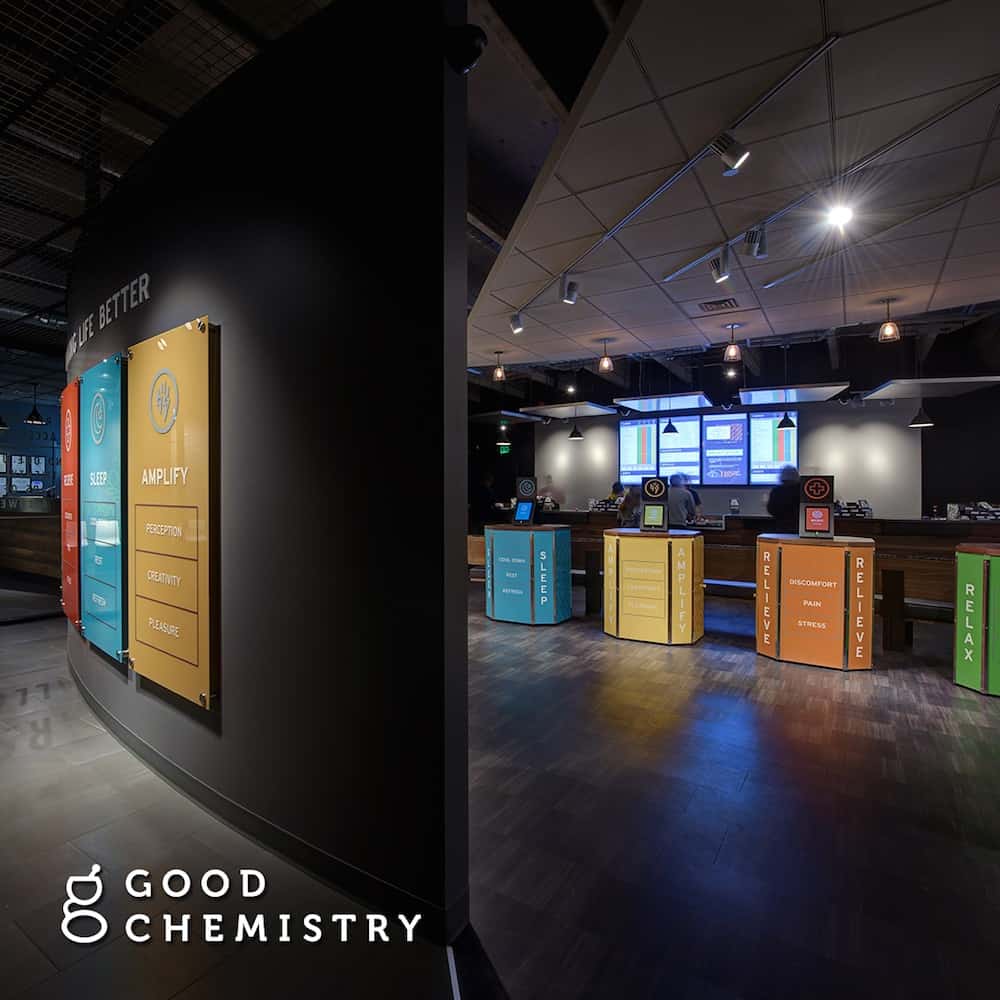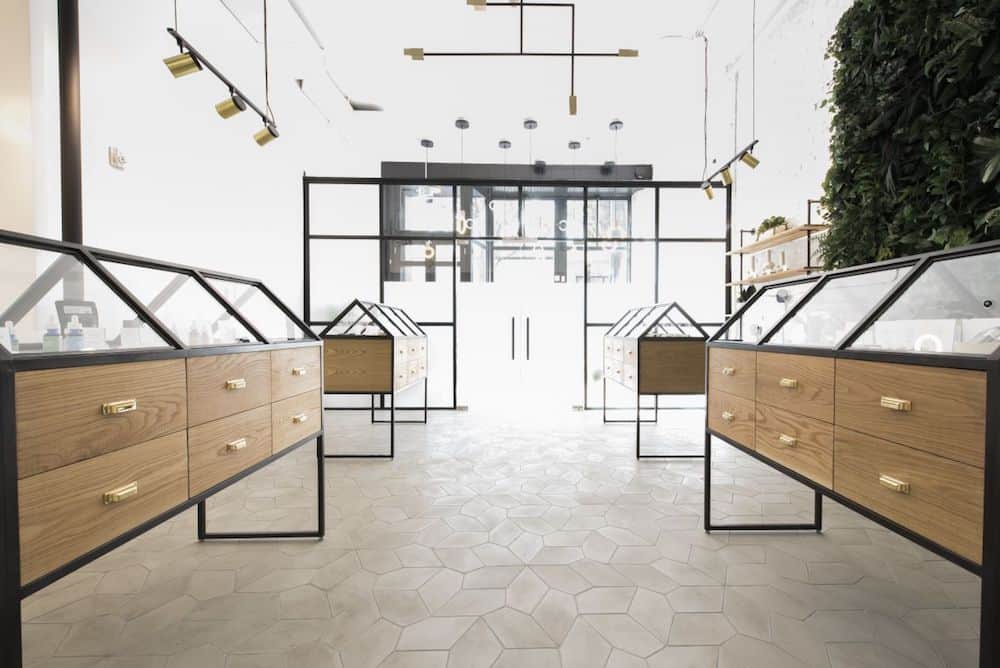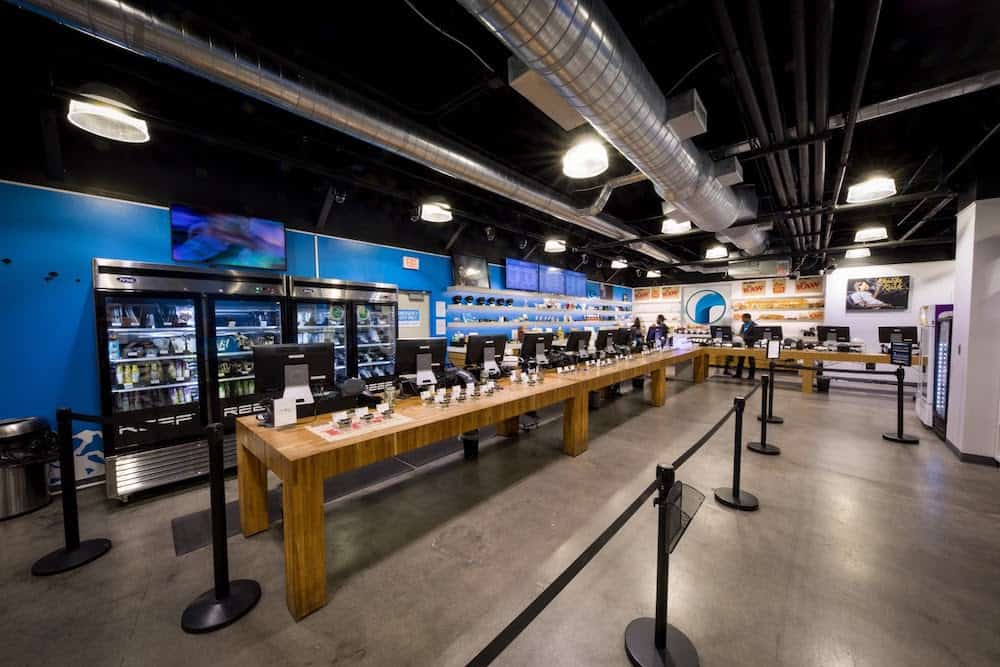Editors Note: Welcome to our newest bi-weekly column, Classing Up Cannabis. Consider this your go-to spot for fluid, applicable advice regarding the image, design, marketing, and branding of your cannabis business. Right now, most of the content in the cannabis zeitgeist neglects to highlight or speak to the minds behind businesses—you know, those fueling the industry. Whether you’re just launching a brand or your long-time business has weathered the transitional storm of complex regulation, we dedicate this column to you.
When medical cannabis was first legalized in California in 1996, the concept of cannabis branding was essentially non-existent. Dispensaries looked less like retail stores and more like back-alley speakeasies with bars on the window and a generally uninviting atmosphere, accented by packaging products in Ziplock baggies.
Fast-forward twenty years, and the landscape is drastically different. Instead of being sketchy holes in the wall, most dispensaries resemble Apple stores. So, what happened? How did cannabis dispensaries change, and what are the design elements that prospective dispensary owners can implement in their stores? If you’ve ever asked yourself these questions, we’ve got answers for you.
Great Lighting
Good dispensary design starts with good lighting. When the first handful of cannabis dispensaries opened their doors in the late ‘90s, most were illuminated with harsh fluorescent lights that glared in customers’ eyes and made everything feel and look dingy. Most contemporary dispensaries have done away with hospital lighting in favor of a more pleasant experience.
In order to create a more pleasant lighting experience in your cannabis dispensary, try and utilize the three types of lighting: ambient, accent, and task lighting. Ambient lighting is used to illuminate the room, usually in the form of recessed lighting. Task lighting, on the other hand, performs a specific purpose and often appears in the form of direction light fixtures, pendant lighting, or a simple desk lamp. Accent lighting is used for aesthetic purposes, such as a chandelier, although it may also serve a functional purpose as well.
By understanding how the three types of lighting interact, you can help give your cannabis dispensary an inviting atmosphere. Start with your ambient lighting to get a general feel for your store, and then move on to accent lighting. Is there a place in the store that you want people to focus on? Try placing some accent lighting to draw in their attention.

Courtesy of Good Chemistry
One dispensary that does a good job with lighting is Good Chemistry. This dispensary has been able to create a warm and inviting storefront that would make any shop owner jealous. They use a combination of task and accent lighting to draw customers to the kiosks in the middle of the store. Notice how the ambient lighting illuminates the store, but doesn’t overpower the senses? You don’t have to copy this lighting scheme yourself. Do take note of how the three types of lighting interact, however, and use that to your advantage.
Customer Education
Not everyone is well-versed in what constitutes good cannabis. And for those people, walking into a 420 retail store can be intimidating. What’s the difference between Blueberry Kush and Lemon Kush? Is it the flavor? Will I get too high? These are the kinds of questions customers and patients will ask, and consequently, dispensary owners need to dedicate some of their resources to customer education.
Naturally, this involves having a team of educated budtenders. But it also goes deeper than that. To start, cannabis products need to be displayed in such a way that customers can easily identify and inspect them. For example, MedMen has clear plastic containers that have dry flower in them and vents so customers can get a whiff of the herb. In front of those containers are tablets that contain information about the strain, including: name, potency, and a detailed breakdown of its cannabinoids. Though many customers don’t particularly care about the percentage of THC-A in their cannabis, being able to see and smell what the product will go a long way in terms of improving customer experience.
Another way to improve customers education is to place educational pamphlets in a convenient location. While having great budtenders and hi-tech tablets is great, some people feel uncomfortable asking questions and would rather find out what each cannabinoid does on their own. Simple, easy to read pamphlets are a great way to ensure this customer isn’t left out of an educational experience.
An Open Floor Plan
Going back to the dispensaries of yesterday, one of the most unpleasant parts about old dispensaries is how crowded they felt– they almost felt like pawn shops. Nowadays, strict regulations limit where a dispensary is located. However, no matter the location of your dispensary, the goal should be to give your customers as much space as possible. The best way to do this is by going with an open floor plan.

Courtesy of Serra
The term “open floor plan” generally refers to spaces which make use of large and open spaces, and minimizes the use of small rooms. An open floor plan free of clutter can help put your customers at ease and make them feel more comfortable browsing. When considering an open floor plan, keep these things in mind
Keep it clockwise: Most people, at least in North America, look at things and move from left to right. Try arranging your store in such a way that customers move through your store in a clockwise direction. Not only will it make the purchasing processing flow more naturally, but it will help customers relax.
Slow it Down:As much as you would like to have customers coming in and out as fast as possible, great design doesn’t always work that way. Sometimes, retailers will strategically place specials or popular items in certain places to help slow down the customer and give them the opportunity to make an impulse purchase. Just make sure that your “speed bumps” don’t end up blocking the customer’s movement through the store.
Use Creative Displays: If you’ve ever been in a grocery store, then the odds are pretty high that you’ve seen creative displays where products (usually soda packs) are put together to create a visually pleasing tiered formation. You don’t necessarily have to create a gigantic pyramid of all your best-selling products, but you should at least experiment with blocking together some of your products (or at least their packaging) and putting them in visually pleasing geometric shapes.
Manage Your Customer Flow
When it comes to owning a dispensary, good days are busy days. Every business owner wants as many customers as possible in their store at all times. But if you don’t have a way to manage all of those customers, it could be a disaster. That’s why it’s critical to design a store that takes customer lines into consideration.
You may find yourself torn over how much space to dedicate to customer lines and browsing, and honestly, there is no simple solution. However, if you’ve adopted an open floor plan you should be able to relieve some of the tension that comes with customer queuing. Here are a few things to keep in mind when designing a space for customer lines.

Courtesy of Reef Dispensaries
Keep Them Busy: One way to reduce the stress of your customers waiting in line is to find ways of keeping them busy. MedMen, for instance, has a budtender relay a customer’s order, which allows a customer to continue browsing the store while they wait. Not only does this make the wait seem shorter, but it also gives them an opportunity to make any last-minute impulse purchases.
Keep it Fair: Large lines can turn nasty in a flash, and one of the largest contributors to this turn is perceived unfairness. Maybe someone cut someone in line or darted over to another shorter line. Either way, people can become disgruntled quickly. If you can, try implementing a single line or a ticketing system to give everyone waiting for service a sense of fairness and order.
Encourage Customer Feedback: The easiest way to improve your customer flow is by asking your customers about their experience. At the end of the purchasing process, ask your customers to participate in a short survey and find out about their experience. To increase the number of people taking your survey, try offering discounts or free items in exchange for their participation.
Crafting a well-designed dispensary can be difficult, but it is not impossible. You don’t need to be the trendiest or the coolest person on the planet in order to come up with a good dispensary design. Just follow the fundamentals. Make sure your shop is properly lit and gives off an inviting atmosphere, keep educational resources on hand so customers feel comfortable shopping, and make sure you keep your dispensary open and free of clutter.
Most of all, design your dispensary with the customer in mind. Taking their feelings into account will help you achieve a beautiful and well-designed cannabis dispensary.
The post Classing Up Cannabis: Designing A Dispensary For An Ideal Customer Experience appeared first on High Times.




0 DL LiNKS:
Post a Comment
Add yours...